Breast Cancer
Breast cancer
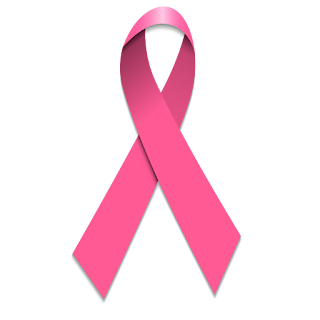 |
| Pink ribbon is a universal symbol for breast cancer awareness, prevention, and support. |
It's the most common cancer in females. Affecting about 2.3 millions allover the world each year.
Types:
There are two main types of breast cancer
- Ductal carcinoma: the most common and accounts for about 85% of cases. It occurs in the ducts the deliver milk from the lobules of the breast to the nipple.
- Lobular carcinoma: orginates in the lobules of the breast and accounts for only 15% of all breast cancer cases.
Causes:
As all cancer of the body; there's no single cause for it, instead, a multiple factors that can contribute in causing the disease. Factors that increase the likelihood of having breast cancer includes:
- Female gender: this is the most common and significant risk factor. It's very rare for males to have breast cancer; only 1% of cases occur in men.
 |
| Being female is the most common risk factor for having breast cancer. |
- Aging: the risk of having breast cancer increases with age advancement.
- Lack of breastfeeding: women who don't breastfeed their babies have a higher risk of developing breast cancer than women who do.
- Early menarche: women who start having their peroids too early are at a higher risk.
- Late menopause: women who also continue to have periods at late age have also increased risk.
- Alcoholism: alcohol intake increases breast cancer risk
- Obesity.
 |
| Obesity increases the risk of Diabetes, atheroscleosis, hypertension, colon cancer, and breast cancer. |
- Exposure to radiation: exposure to excessive amounts of radiation especially to the chest increases your likelihood of developing breast cancer.
Symptoms & signs:
- Breast mass: a mass felt by the patient is the most common presentation encountered. The mass is mostly painless and hard but it may be painful. Masses most commonly occur in the upper outer quadrant of the breast where the most number of glands exist.
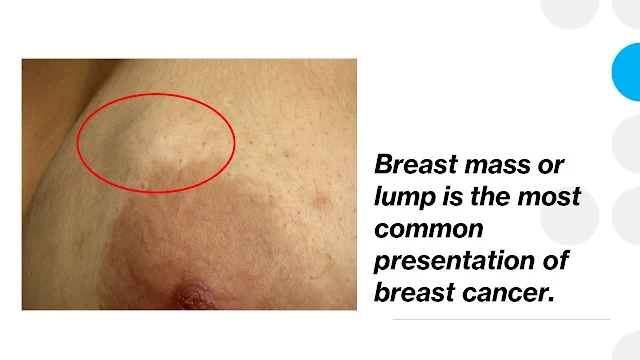 |
| A lump in the breast is the most common presentation of breast cancer although most breast lumps are benign. |
- Breast enlargement or asymmetry: enlargement of one side than the other or asymmetry in the shape between both breasts.
- Nipple changes: nipple retraction, distortion, or ulceration.
 |
| Breast cancer may cause a nipple to retract inward |
- Skin changes: such as ulceration or eczema: of the skin of the breast. Other changes may include redness or change in the texture of the skin.
 |
| Peau d'orange |
Spread:
The cancer cells usually spread to other sites of the body where they can grow making new colonies of the tumor. Spread can occur directly to nearby tissues, through lymph vessels, or through the blood vessels. Death of breast cancer occurs due to this spread of tumor cells. Organs most commonly affected are the lung, liver, bones, and brain.
Treatment:
A treatment plan can be made according to type of the tumor, its stage, spread , age of the patient, and tumor receptors. Treatment modalities include:
- Surgery: there are many surgical alternatives that aim in completely removing the tumor ranging from total removal of the breast with its lymph node to just removal of the lump.
- Radiotherapy: decreases the risk of recurrence after surgical excision.
- Chemotherapy: can be used as an adjuvant therapy after surgery or as a treatment for an advanced tumor with massive spread.
- Hormonal therapy: if the tumor is sensitive to estrogen, progesterone, or both.
Prevention:
-Regular breast self examination: this helps you to know your breasts and makes it easy to notice any changes early.
- Breastfeeding: as mothers who breastfeed their babies have lower risk than mother who don't.
- Regular exercising: keeping your fitness decrease your risk of breast cancer.
 |
| Regualr exercising helps you stay healthy |
- Healthy diets: that are rich in fruits & vegetables. And reducing fat intake.
- Reduce exposure to radiation: if you work with radioactive substances or radiology labs it's important to keep yourself protected all the time.
Summary:
Breast cancer is a type of cancer that occurs in the breast tissue. It is the second most common cancer in women worldwide and can also affect men, although this is much less common.
Breast cancer can develop in different parts of the breast, including the ducts, lobules, or connective tissue. The exact cause of breast cancer is not known, but there are certain risk factors that increase the likelihood of developing the disease. These include:
- Gender: Women are at a higher risk of developing breast cancer than men.
- Age: The risk of breast cancer increases as women get older.
- Family history: Women with a family history of breast cancer are at a higher risk of developing the disease.
- Genetics: Certain gene mutations, such as BRCA1 and BRCA2, increase the risk of breast cancer.
- Hormonal factors: Women who have started their periods at an early age or have gone through menopause at a later age have a higher risk of breast cancer.
- Lifestyle factors: Certain lifestyle factors, such as being overweight or obese, not exercising regularly, drinking alcohol, and smoking, may increase the risk of breast cancer.
Symptoms of breast cancer may include a lump or thickening in the breast tissue, changes in the size or shape of the breast, dimpling or puckering of the skin, nipple changes, such as a nipple that turns inward, and discharge from the nipple.
Breast cancer is typically diagnosed through a combination of physical exams, imaging tests such as mammograms, ultrasounds or MRI, and biopsy. Treatment options for breast cancer may include surgery, radiation therapy, chemotherapy, hormone therapy, and targeted therapy. The specific treatment plan will depend on the type and stage of breast cancer, as well as other factors such as the patient's age and overall health. Early detection and treatment of breast cancer can improve outcomes and increase the chances of survival.
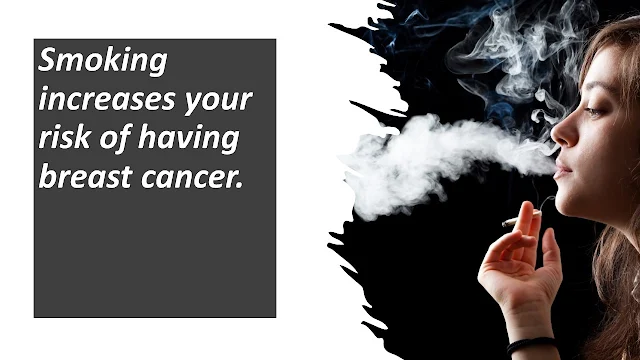

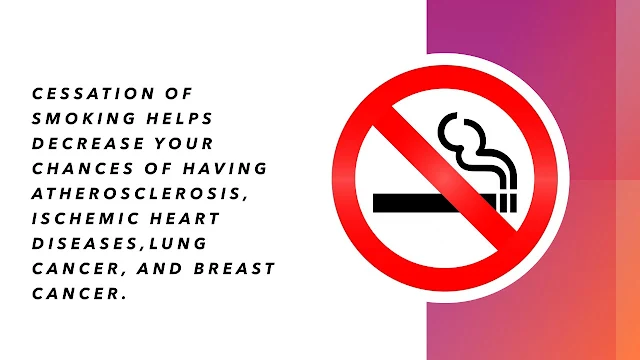
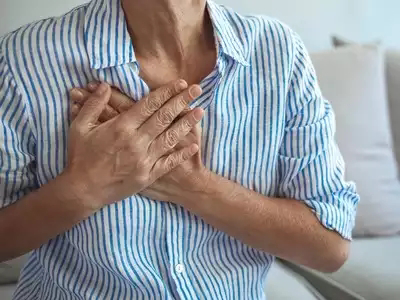


Thanks for this helpful topic
ReplyDelete